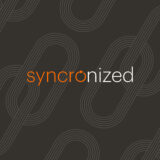Your clients need a reliable way to communicate with you regarding issues they’re having. You need an effective way to manage incoming requests and resolve them as quickly as possible.
The conventional wisdom in both managed services and the broader support industry is to offer as many ways as possible for clients to contact you for tech support so they can choose the method that’s most comfortable and convenient for them.
But is that really the most effective or profitable strategy for your MSP business?
With so many options available today, figuring out the right tech support channels to offer can feel overwhelming. Should you lean into automation? Focus on live chat? Offer traditional phone support?
The truth is, the best support strategy isn’t about offering every channel. It’s about offering the right mix for your clients, your team, and your workflows. Let’s take a look at a handful of common tech support channels you could potentially offer, and why you might want to use them or not.
Email Support: Still a Cornerstone
Despite the rise of real-time communication, email continues to be a core support channel for MSPs. It’s reliable, trackable, and familiar to virtually every type client across every type of industry.
As Syncro Channel Chief Andy Cormier says: The best tech support intake method is always email.
His argument? Everyone has an email. It requires no setup. And all the customer has to know is what email address to send the request to. He’s got a point.
Email allows both clients and technicians to communicate asynchronously, which is great for non-urgent issues and complex explanations.
In short, email isn’t going anywhere. If anything, it’s evolving, especially when layered with automation and ticketing workflows that make support smoother on both sides.
Live Chat: Real-Time, Cost-Efficient, Client-Friendly
Live chat has quickly become one of the most efficient and preferred support tools, and for good reason. Because the conversation is live, you can often get issues resolved quickly instead of having to wait hours or even days for clients to answer clarifying questions by email.
And it’s not just about speed either. Chat is less expensive for you than phone support, and it’s more efficient for your team. A single technician can manage multiple chats at once, reducing wait times and improving resolution rates.
Plus, if a chat becomes too complex, it can be escalated into a ticket within Syncro, with the entire conversation logged for reference.
All in all, chat is a highly effective channel for tech support: popular, efficient, and cost-effective. If you were going to add a second channel outside of email, this is likely the best choice.
SMS Support: Fast & Convenient (When Used Strategically)
Offering your clients the ability to text you opens up a big can of workflow worms, not to mention response time expectations. (“I sent you a text. Did you get it? Did you get it? Why haven’t you texted me back?”)
Are you going to give out technician cell numbers (or your own)? Certainly not advisable. But while texting might not be the first channel that comes to mind for tech support, it can be incredibly useful for specific use cases. For example, SMS is ideal for quick updates, reminders, or check-ins, especially when clients aren’t sitting at a desk or don’t check email frequently.
The key is to treat SMS as a structured business tool, not a personal line of communication. Syncro integrates with SMS gateways that convert messages into formal tickets, keeping everything documented and centralized. It’s best used for alerts (e.g., “Your endpoint is offline”) or confirmations (e.g., “Your ticket has been resolved”), rather than long back-and-forth threads.
If you decide to offer support by text, you’ll definitely want to invest in some additional tooling that can forward any messages to email and then to tickets. From there, your team can handle the tickets in their usual ways following their usual protocols.
Phone Support: Human Connection Matters
Phone support may seem “old school,” but it still plays a crucial role in MSP service delivery. No matter how many new communication methods arise, some people still prefer to make a phone call.
When I worked at an MSP, I always preferred email and chat requests so I could multitask more efficiently, but the phone was always great for situations where a client had difficulty conveying their problem over email. A person-to-person chat definitely allows for more specific back and forth.
However, if you do choose to offer tech support by phone, make sure to have a strategy in place to minimize potential disruptions that phone calls can cause. For instance, designate a dispatcher to answer calls or rotate the duty among your technicians so your whole team doesn’t lose focus each time the phone rings.
At the end of the day, making phone support as measurable and manageable as any other channel is the best thing you can do for your customers who prefer it.
Onsite Tech Support: When You Need to Be There
We’ve touched on all the remote tech support channels. What about onsite?
For years, RMM software and remote access tools have continued to reduce the need for onsite support. However, sometimes nothing beats being onsite, whether it’s for a hardware install, network configuration, or compliance audit. Field service remains a key offering for many MSPs, and support processes should account for it.
Syncro’s field service tools make scheduling and dispatching easier than ever. Technicians can check in and out via mobile, track time on-site, and upload documentation or photos to the ticket. This makes billing, reporting, and compliance far more seamless while also giving clients peace of mind that their issue is being handled professionally.
Bringing It All Together: Unified, Omnichannel Support
Today’s MSPs need more than just responsive service, they need the right tech support channels to meet client expectations, streamline operations, and scale with confidence. Whether it’s traditional tools like email and phone or modern platforms like Slack, chat, and AI, the key is integration, flexibility, and clarity.
By leaning into the tech support tools that align with your clients’ habits and your team’s strengths, and managing it all through a platform like Syncro, you’ll not only improve service. You’ll build trust, efficiency, and long-term loyalty.
Share














